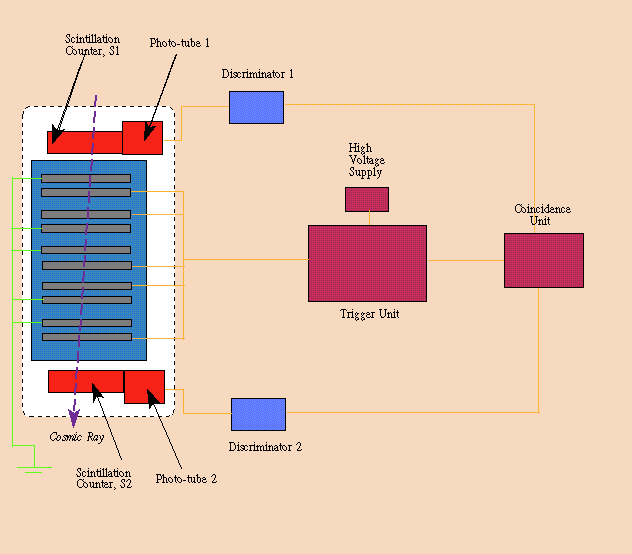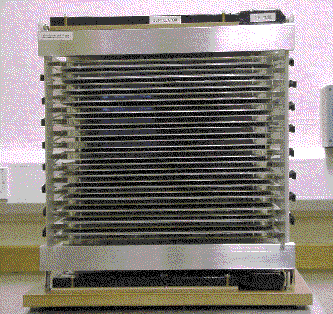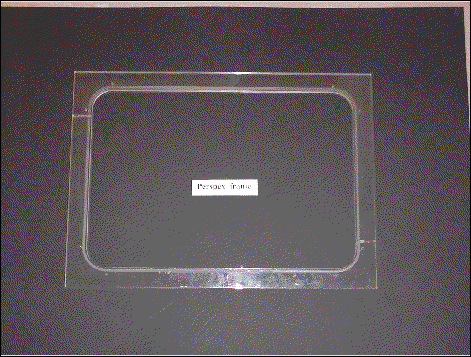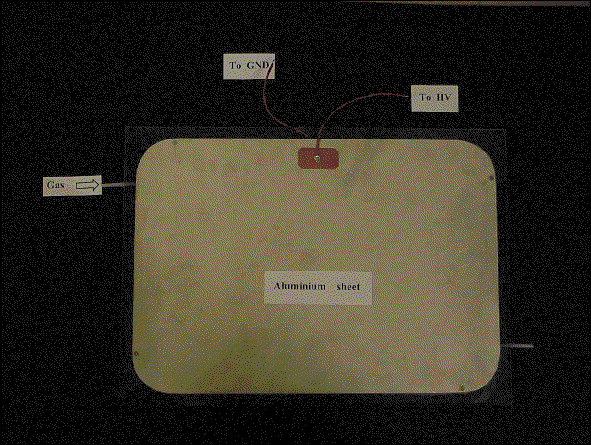
Below is a basic explanation of how the spark chamber works:

Our spark chamber consists of 16 modules, each module being approximately (47cm x 30cm x 0.8cm). The design is quite robust - a spark chamber in particle physics research would normally consist of much less material.
The description which follows is relevant to a modular structure spark chamber, but the general idea is the same for the parallel plate spark chamber, used in research.

Figure 2: Photograph of the detector part of the spark chamber. The detector consists of the 16 modules, mounted one on top of the other. Above the top and below the bottom module are situated scintillation counters, each connected to photo-tubes. These can be seen clearly at the top of the photograph and to a lesser extent, on the bottom.
Each module consists of a perspex frame, 0.8cm thick

Figure 3: The perspex frame of one module
On the top and bottom of these perspex frames are glued 3mm thick aluminium plates

Figure 4: Aluminium plates placed on the top and bottom of each module
For each module, one aluminium plate is connected to ground while the other is connected to the High Voltage (HV) circuit.
The active volume of each module, within the perspex frame and between the aluminium plates is filled with a noble gas mixture (70% Neon, 30%Helium). The gas flows in series from one module to the next, through all 16 modules.
At the top and bottom of the spark chamber, covering the active area of the modules, are located plastic scintillation counters. When the scintillation counters are traversed by a charged particle, the ionisation produced may recombine, emitting visible light. The photons are detected by a photomultiplier tube. Since both the scintillation counter and phototube have a fast response time, the resulting electrical signals indicate in a very short time the passage of charged particles.
For a step-by-step guide to how the spark chamber can detect cosmic rays, click here
Return to the home page